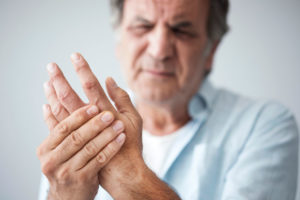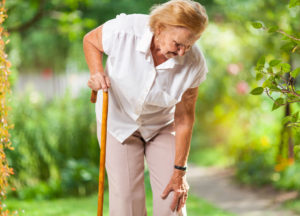The hand is a complex part of the body, made up of many small bones, muscles, ligaments, tendons, nerves, and other structures to allow them to perform a number of intricate movements. The hand and wrist are therefore quite vulnerable to many injuries and conditions which can cause pain and reduced function.
If you have hand and wrist pain that doesn’t seem to be improving despite home remedies (such as taking over-the-counter pain-relief medicine), you should visit a family medicine provider for a medical evaluation – because delaying treatment may allow the problem to become worse. Let’s talk about when you will know that it is indeed necessary to see a family medicine provider for your aching hand and wrist.
When Should I See a Family Medicine Provider About Hand Pain?
Some hand and wrist conditions and injuries are short-term and may go away on their own or with resting the area. But other conditions warrant further investigation and treatment from a family medicine provider in order to have a successful outcome.
You should visit your family medicine provider if:
- Symptoms don’t improve with rest and ice therapy
- You experience pain or discomfort even when the hand is not moving
- You have a reduced range of motion in the hand, wrist, and/or fingers
- Pain, swelling, or hand/wrist function is getting worse rather than better
- You have signs of infection (redness, heat, fever, or chills)
- You experience tingling or numbness regularly in your hands
- Normal, everyday activities are causing pain or are becoming increasingly difficult
- Simple treatments and over-the-counter medication do not help
Some symptoms require urgent treatment by a family medicine provider, as they may indicate a fracture or dislocation. Signs may include severe pain, swelling, bruising, an obvious sudden deformity, or an inability to move your hand, wrist, or fingers normally.
Common Causes of Hand and Wrist Pain
There are many potential causes of hand and wrist pain, but some of the most common causes include the following:
Arthritis
The technical definition of arthritis is inflammation in one or more joints. Arthritis can cause pain, stiffness, and swelling in the joints, and the hand is one of the most common parts of the body to be affected by arthritis.
Arthritis can get worse over time if left untreated. Osteoarthritis is the most common type of arthritis, as it results from wear-and-tear of the protective cartilage covering the ends of the bones in a joint. If the cartilage has worn down or worn away, it causes painful bone-on-bone rubbing. This can happen to young athletes and active older adults alike.
Carpal Tunnel Syndrome
Carpal tunnel syndrome is a common condition that affects the hand and wrist. It occurs when the median nerve in the wrist becomes compressed or entrapped, preventing it from functioning properly. The median nerve carries messages between the brain, spinal cord, and hand, and signals for sensation and muscle movement. Symptoms of carpal tunnel syndrome include pain and numbness in the hand and fingers – potentially all fingers except the pinkie.
Tendonitis
Tendons are the strong fibers that connect muscles to bones. When a tendon is inflamed, this is tendonitis – which can result when the tendons are irritated in some way.
Tendonitis most frequently develops in the wrist and hand because of overuse, injury, structural abnormalities, or disease, such as arthritis or diabetes. It affects the normal smooth movement of the fingers or wrist, leading to symptoms such as pain, swelling, tenderness, and reduced function in the affected tendon.
Primary Care Provider in Wellington and Royal Palm Beach
If you have hand or wrist pain, the compassionate and skilled medical team at Advanced Medical Clinic is here to provide the proper and necessary treatment to alleviate your pain. We offer comprehensive treatment options and a high standard of patient-centered primary and urgent care services for all of your family’s medical needs.
If you would like to make an appointment with one of our experienced healthcare providers, or to learn more about the services we offer, call us today at (561) 434-1935 or you can request an appointment via our online form now. We look forward to serving you!





